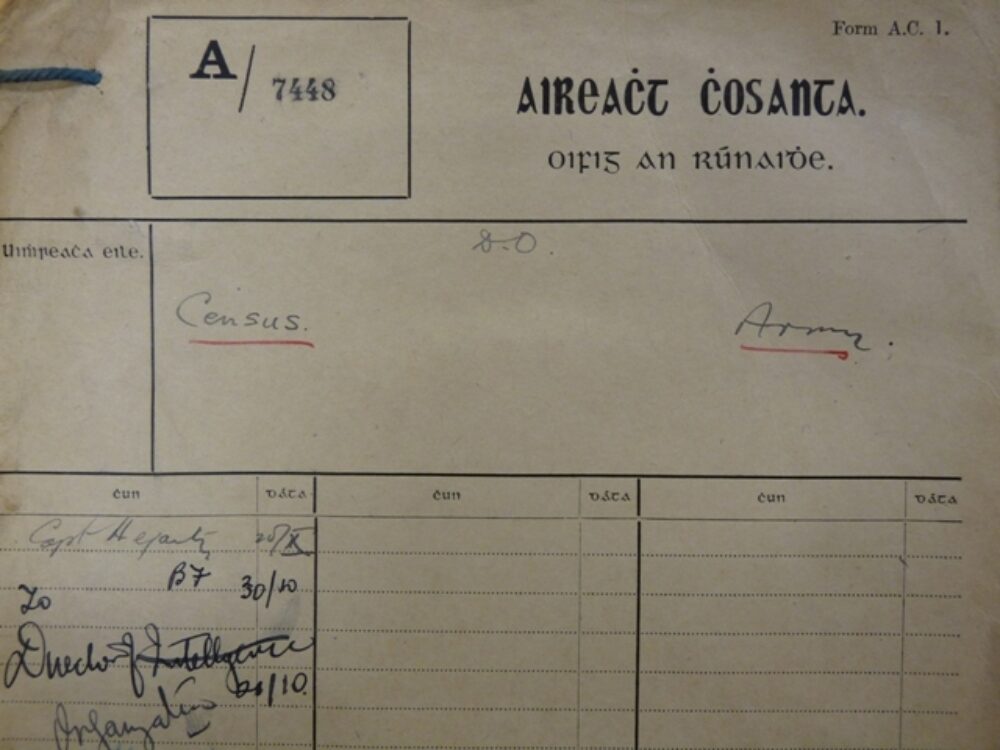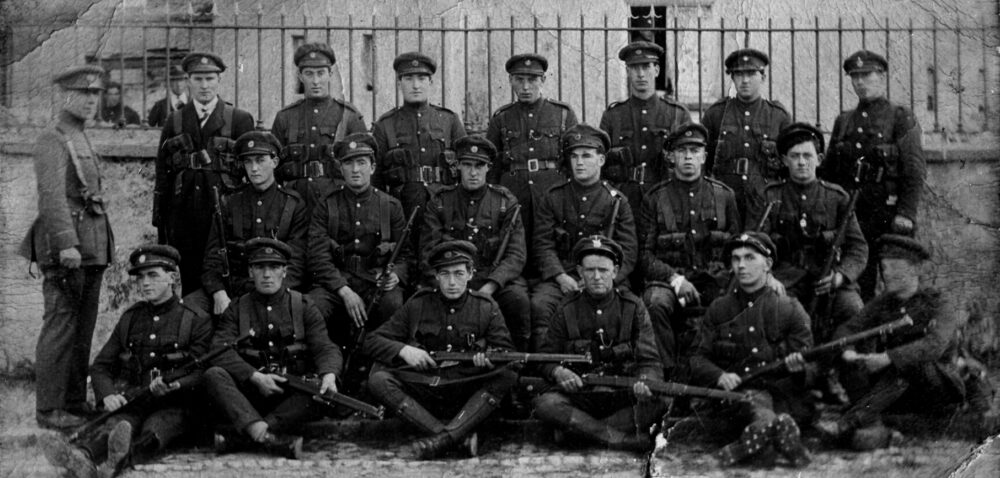When the National Army was formed in 1922, there was no clear provision set down regarding the Strength or Establishment of the force. Under Article 8 of the Anglo-Irish Agreement, signed 6th December 1921, the Irish Free State could establish and maintain a military defence force. The only stipulation made with regard to strength was that the force “shall not exceed in size such proportion of the military establishments maintained in Great Britain as that which the population of Ireland bears to the population of Great Britain.”
Initially, existing units of the Irish Republican Army operated as the defence force of the Free State and they were put to early use coordinating the handover of barracks and posts throughout the 26 counties. Administration of this pre-existing force proved to be a difficult task, which was exacerbated by the subsequent split in the force and the outbreak of Civil War between those who supported and who those who opposed the Anglo-Irish Treaty.
A look at the Army Pay Corps in particular outlines some of the pressures facing the defence forces’ administrative staff. Soldiers in the “Regular Army” had first been paid, or were entitled to be paid, on Saturday 4th February 1922 following the hand over of Beggar’s Bush Barracks earlier that week. Control of pay was through the Army Pay Office and initially the principle was to issue no money to any man unless that man’s Attestation Form came to the Pay Office first.[1] The Attestation Form recorded a soldier’s number, rank, name, unit and dependants and these records would have been instrumental in reckoning the size and make-up of the Army, while also determining necessary issues such as next of kin, required for notification of casualties.
However, the split in the force, extensive recruitment following the outbreak of the Civil War and the deployment of troops throughout the country conspired to overwhelm the Pay Office’s early central system of administration. The localised nature of recruiting and demobilisation can be seen in wireless messages sent back and forth between GHQ and various Divisions. On 27th September General Officer Commanding Limerick discharged troops under his command informing GHQ after the fact. “Reservists discharged owing to fact that Government had taken no notice of repeated appeals to remove prisoners. Had no room for them in Jail unless we released Irregulars”. Col Comdt M. O’Riain, Chief Pay Officer, records in his memorandum on pay an incident whereby 100 men of 1st Western Division were transferred to Dublin without the Pay Office being notified. The Pay Office’s first knowledge of the transfer came in the form of a threat of what would happen if they were not paid by the following Saturday.
Without accurate information, Headquarters staff could not adequately estimate pay bills, feed, clothe or procure weapons or even determine how many troops they had at their disposal. By October 1922 the Army Council had decided that a Census of the National Forces would be taken as at midnight 12/13th November. The Census was administered through the Office of Director of Organisation, then Comdt Gen Diarmuid Ó hEigceartaigh. A census form was designed to capture the required information, specifically: Regimental Number, Rank, Corps, Surname, Christian Name, Age, Home Address, Number on Pay Book, Date of Attestation, Place of Attestation, Married or Single, Religion, Next-of-Kin, Name and Address of Next of Kin and Remarks.
The Census forms were stamped with an individual number to ensure each form could be accounted for and were distributed to each of the General Officers Commanding. From this point they were further distributed to each post and outpost where a compiling officer recorded the details of each soldier at that post at midnight 12/13th November. Completed returns were forwarded to the Director of Organisation by 21st November 1922.
The returns were later arranged alphabetically by post and bound into 10 separate volumes.
It should be borne in mind that the census returns are a snapshot of the strength and disposition of the National Army at a specific point in time. They are a valuable source of information on any soldier serving on that night but the returns cannot account for every soldier that served during the Civil War. One small example of this is a wireless message to GOC Drumboe dated 1st December 1922 carries the terse instruction “Recruit 300 men. Will require both Companies within a fortnight. Date will be supplied later.” [2]
[1] “Memo on Pay” 21st August 1922, A/6820 “Pay Department. Organisation — Appointments of Army Paymasters”. Military Archives
[2] Message from CGS to GOC Drumboe 1st December 1922, CW/RR/018, Civil War Radio Reports, Military Archives




